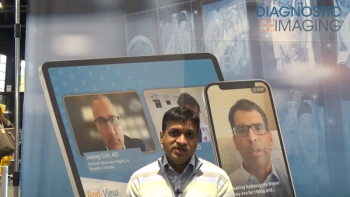
Radiology practice runs PET unit
Greenberg Radiology Institute of Highland Park, IL, installedthe first Siemens ECAT 953 positron emission tomography systemin the U.S. last year, according to executive director BenjaminF. Armbruster. The system was developed and produced by the
Greenberg Radiology Institute of Highland Park, IL, installedthe first Siemens ECAT 953 positron emission tomography systemin the U.S. last year, according to executive director BenjaminF. Armbruster. The system was developed and produced by the Germanvendor's PET joint venture with CTI of Knoxville.
Armbruster, former marketing manager for Siemens' nuclear medicinebusiness, left the imaging vendor to join the private radiologypractice a year ago (SCAN 2/14/90).
GRI began scanning with the PET unit in December. The centerdoes not have a cyclotron on site, choosing instead to purchasefluorine from an outside cyclotron and synthesize 18-fluorodeoxyglucose(FDG).
The high resolution of the Siemens system enables GRI to performPET studies with injections of 5 mCi of FDG, instead of the standarddose of 10 mCi. The lower dose requirement helps the center scanmore patients, using less FDG, Armbruster said.
GRI purchases 600 to 700 mCi of F-18 daily. Since the isotopehas a half-life of 110 minutes, the volume of FDG available forscanning following synthesis is about 100 mCi. Six to eight patientsa day can be easily scanned with this volume of FDG using 5 mCiper exam, he said.
The center has also developed an imaging routine that optimizesradioisotope use. Rather than performing transmission scans priorto each emission scan, all transmission scans are performed beforethe PET agent is available.
"Most sites do a transmission scan that takes 20 or 30minutes. Then they inject and wait another 30 minutes. Then theydo the emission scan. We bring all of our people in early andperform transmission scans up front, so that is all over withby the time the dose arrives," he said.
GRI should make a profit with the PET scanner--which cost over$2 million--if it scans six to eight patients a day for at least250 days a year, Armbruster said.
The PET system has already expanded GRI's referral base. Theradiology practice has received psychiatric patients for the firsttime and is increasing its cardiac imaging business now that itoffers PET services, he said.
Newsletter
Stay at the forefront of radiology with the Diagnostic Imaging newsletter, delivering the latest news, clinical insights, and imaging advancements for today’s radiologists.



























